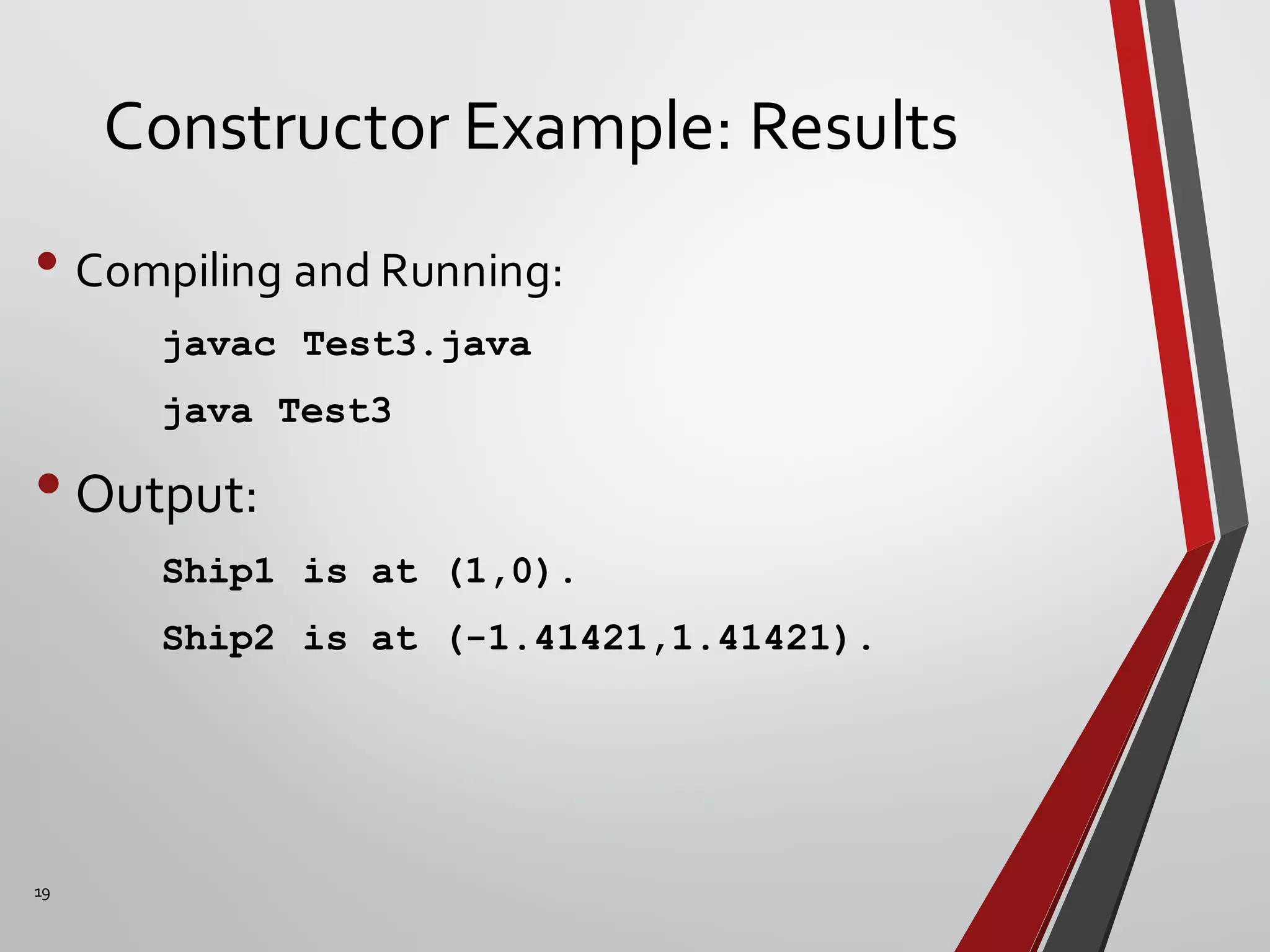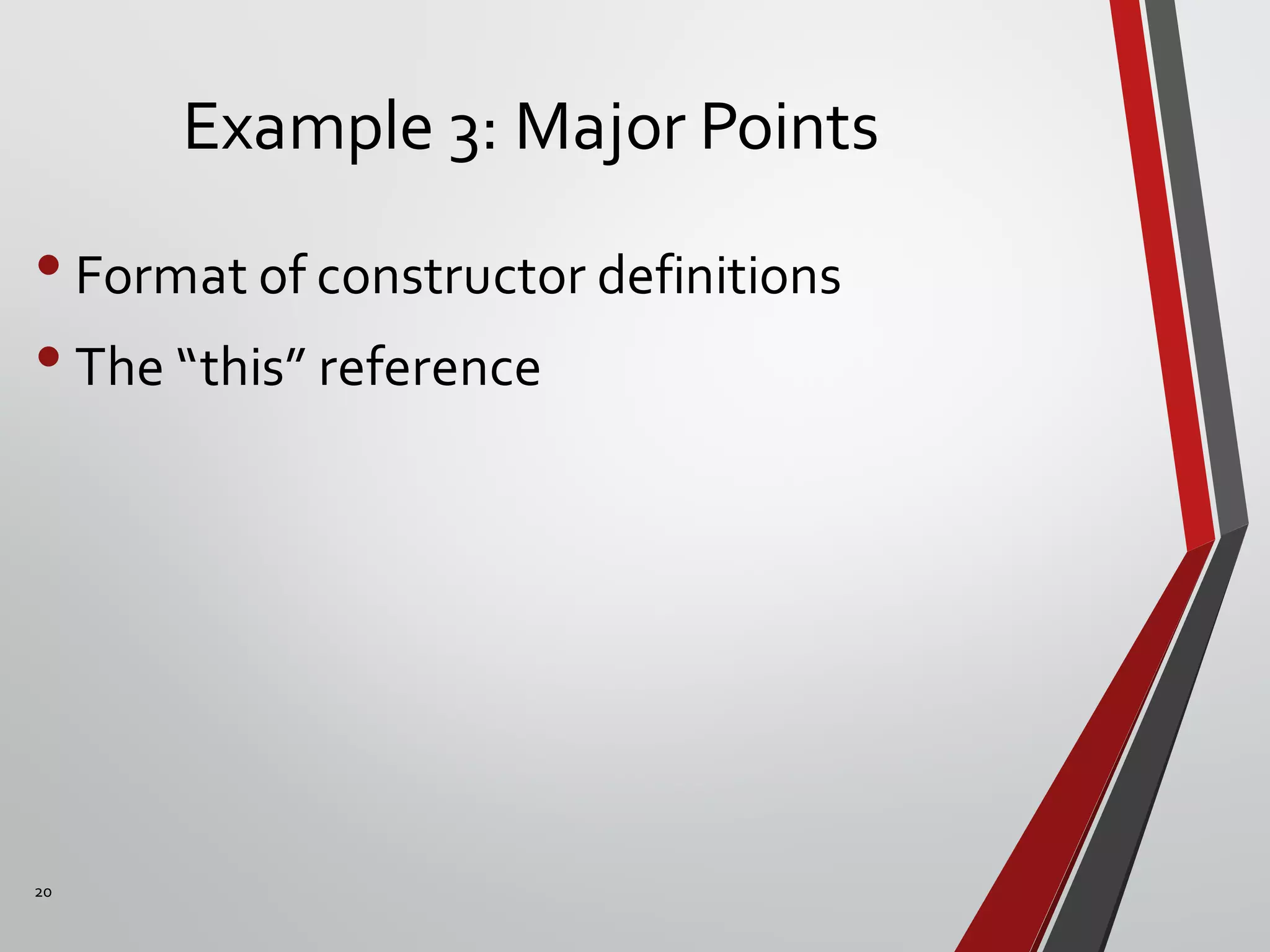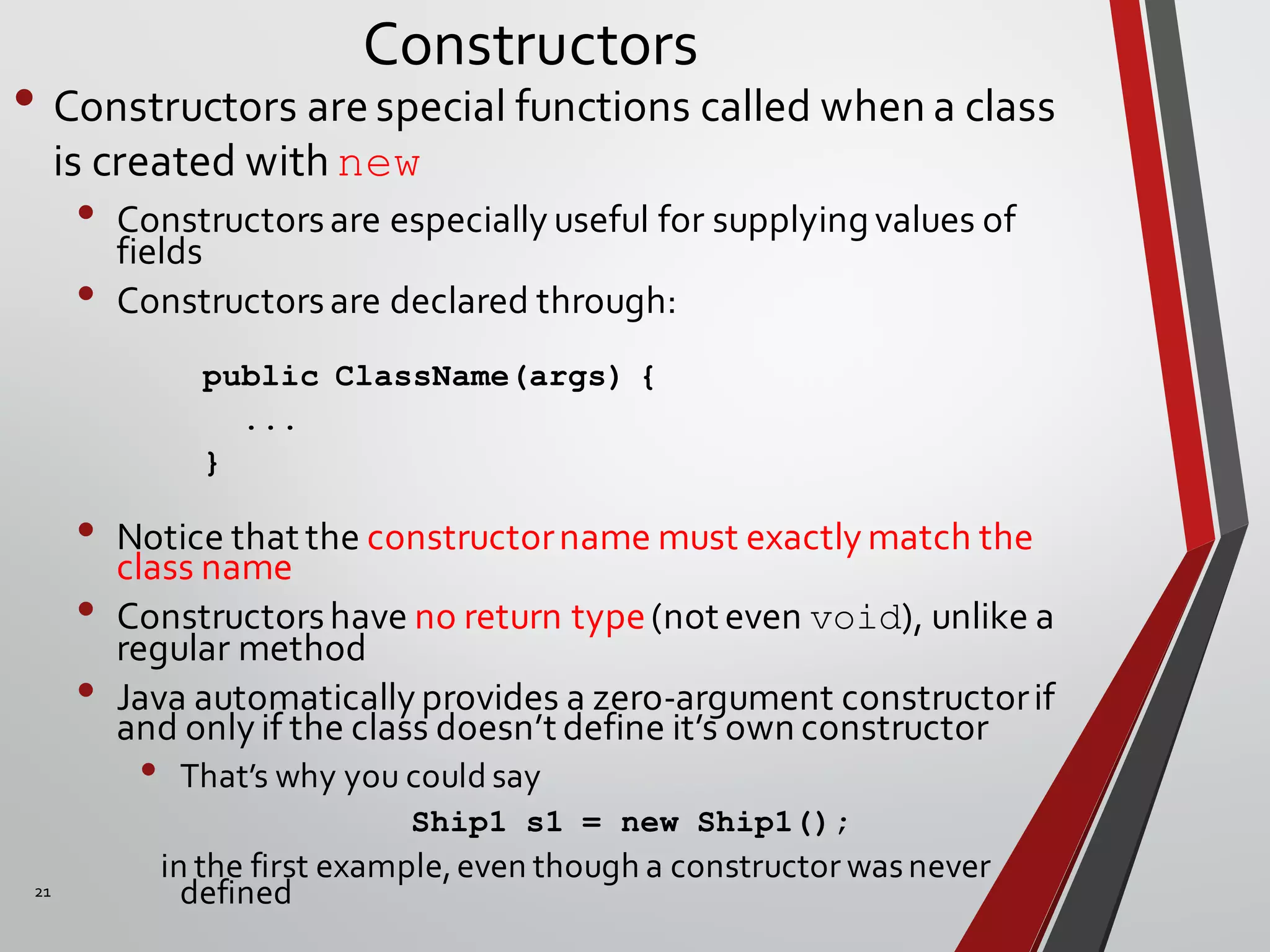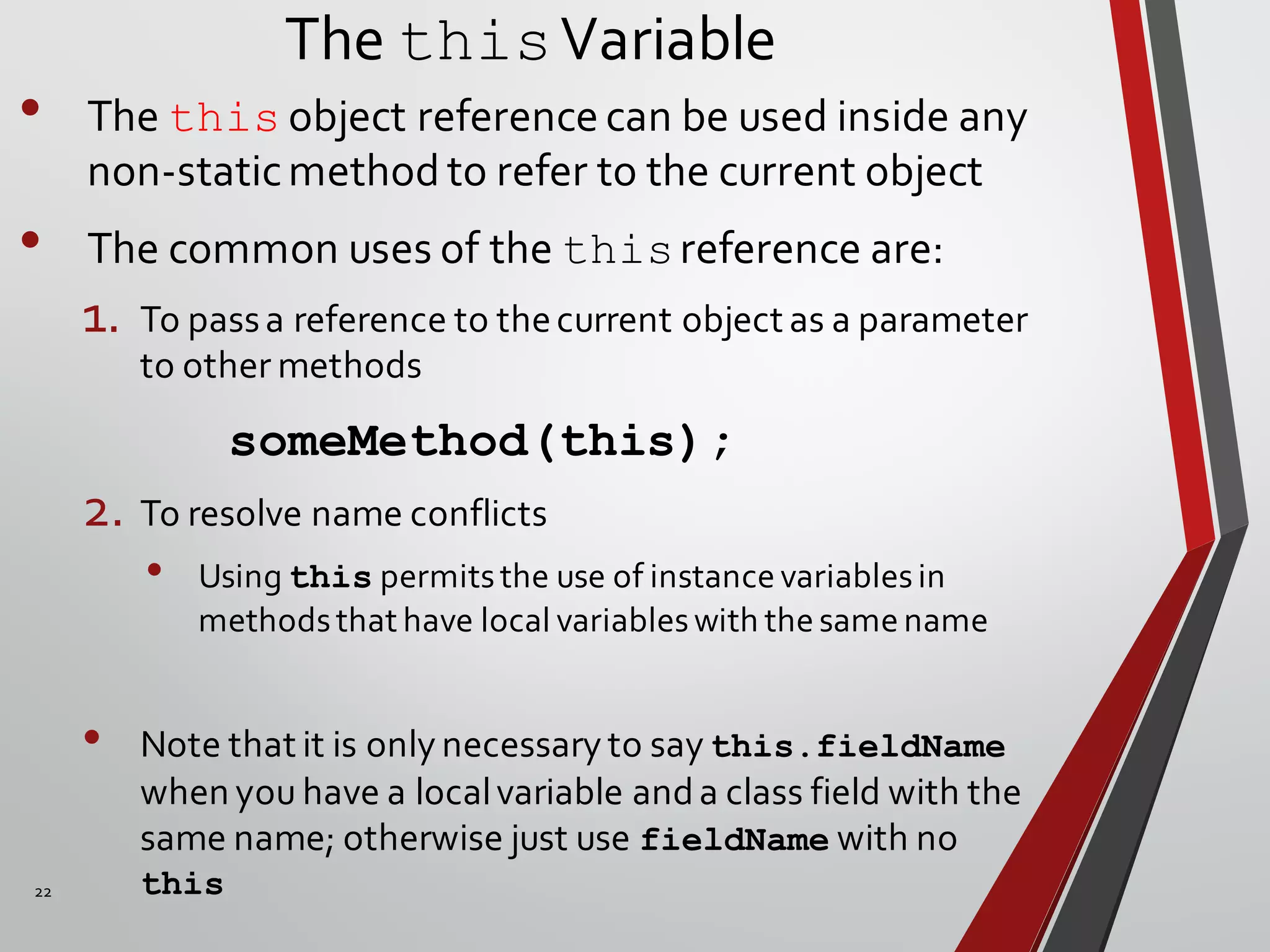The document provides an overview of Java programming basics focusing on classes and objects, including definitions, naming conventions, and method structures. It explains how to create and manage class instances, fields, and methods with practical code examples. Key concepts include the use of constructors, method visibility, and the 'this' reference in Java.
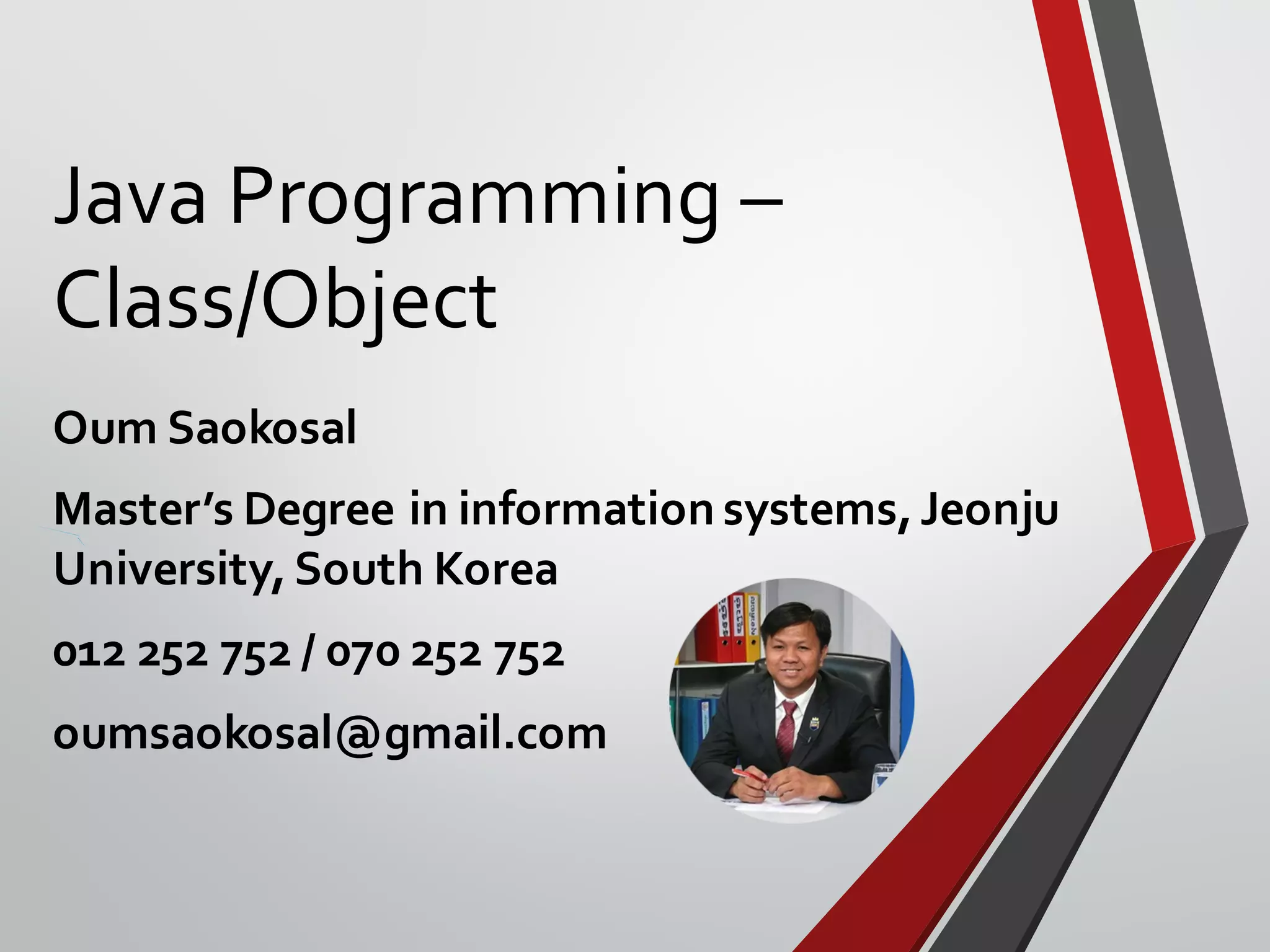

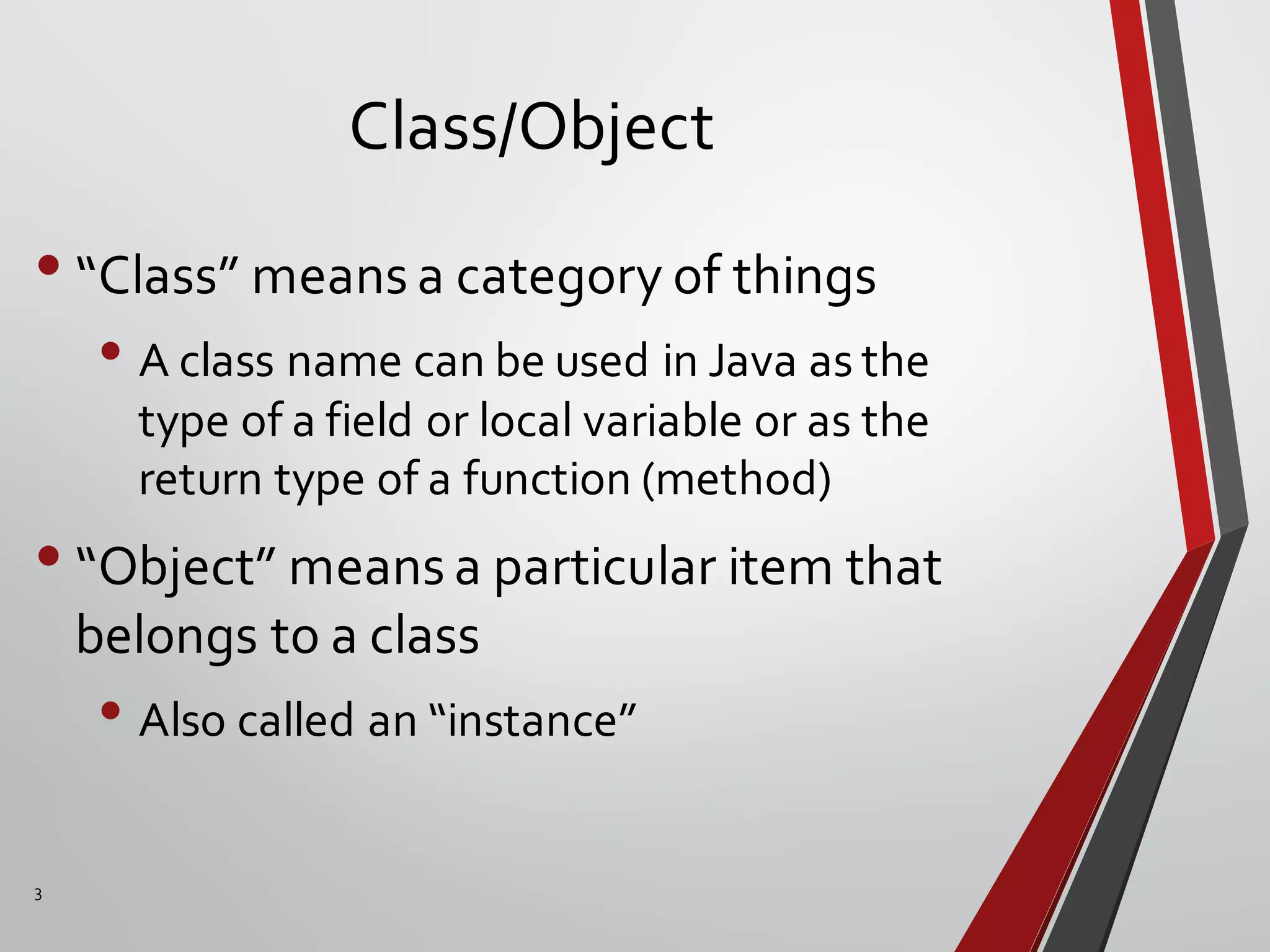
![4
(“Fields” or “Data
Members”)
class Ship1 {
public double x, y, speed, direction;
public String name;
}
public class Test1 {
public static void main(String[] args) {
Ship1 s1 = new Ship1();
s1.x = 0.0;
s1.y = 0.0;
s1.speed = 1.0;
s1.direction = 0.0;
s1.name = "Ship1";
}
}](https://image.slidesharecdn.com/3-160916032326/75/Java-OOP-Programming-language-Part-3-Class-and-Object-4-2048.jpg)
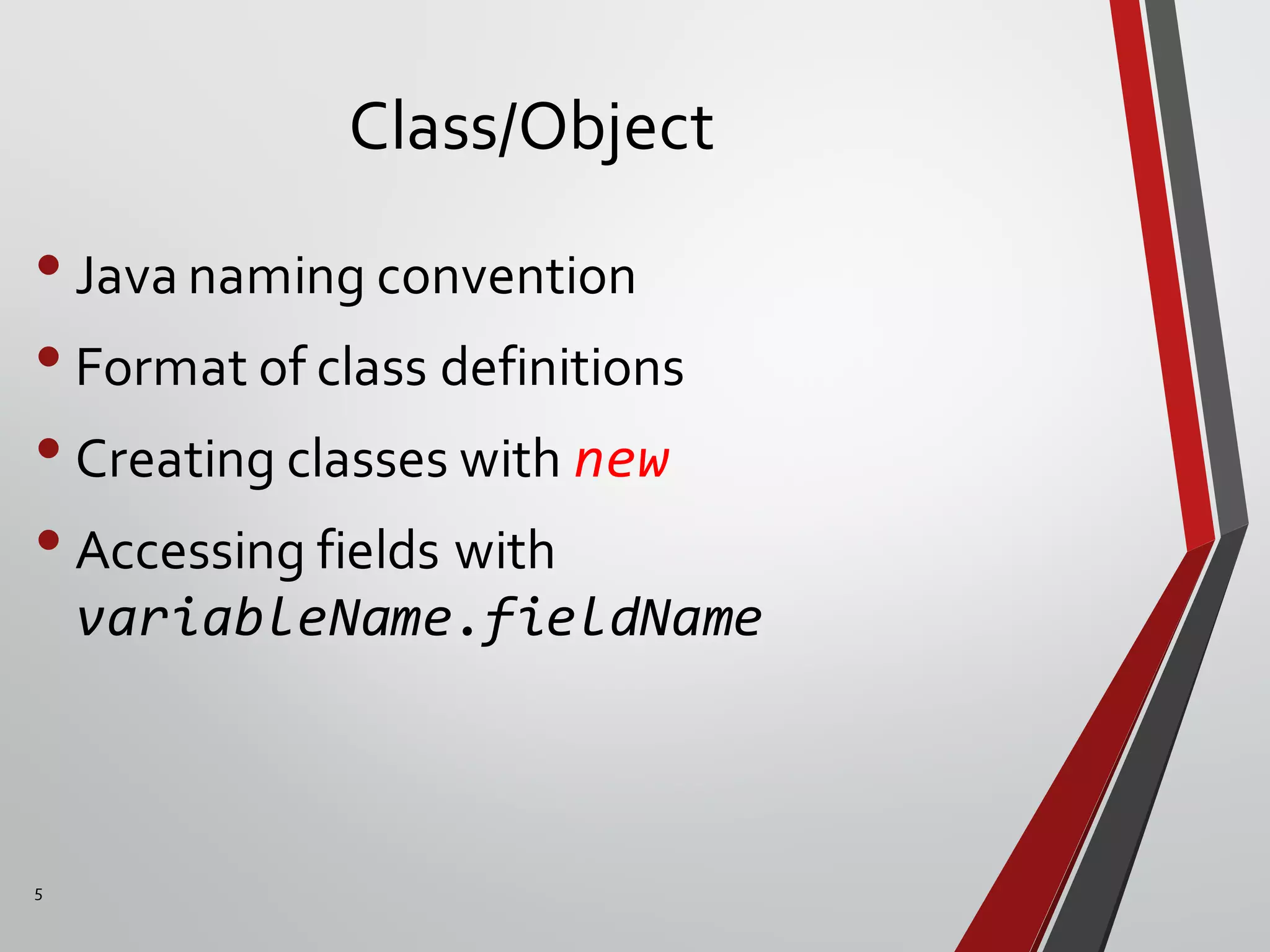
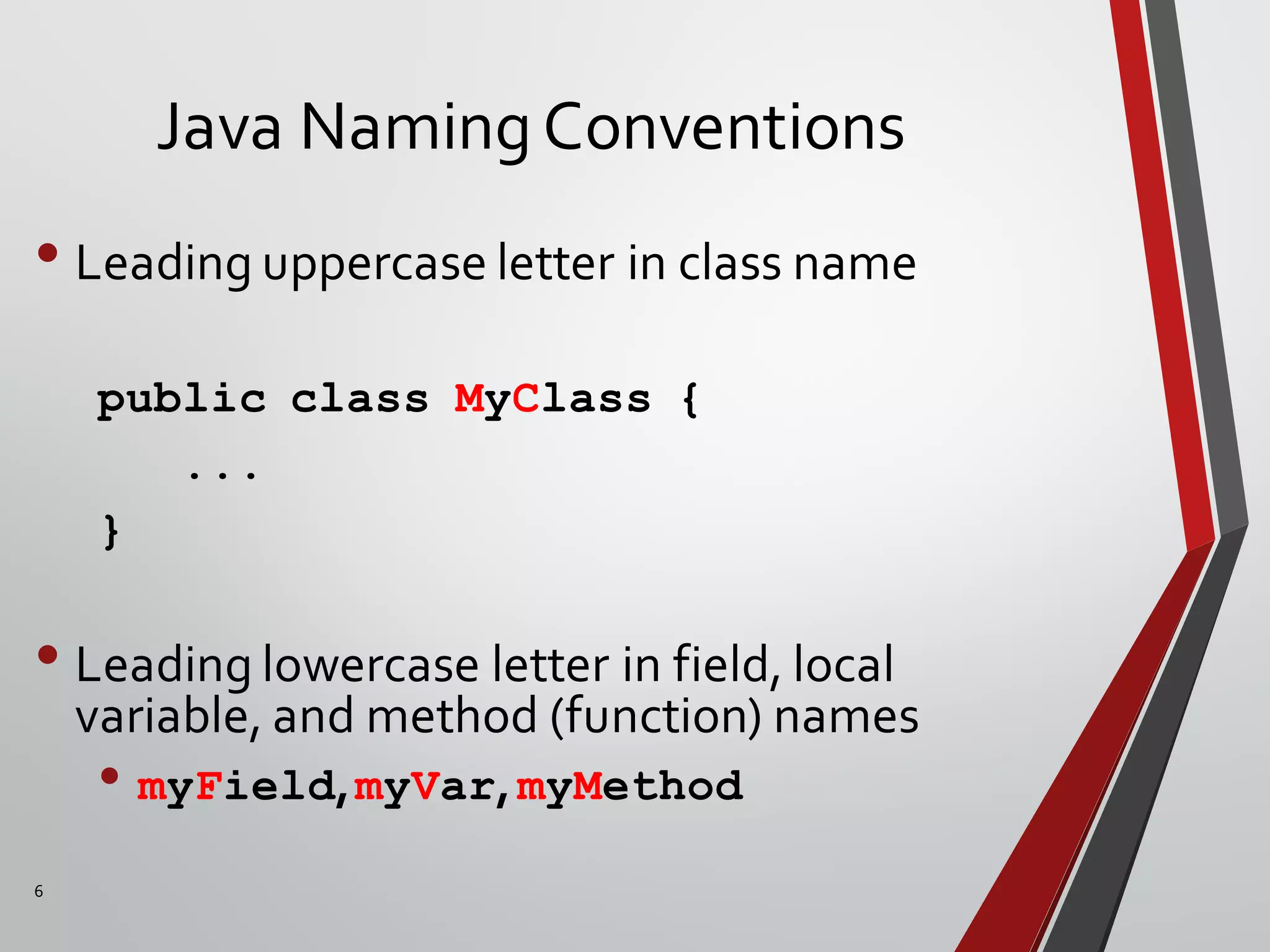
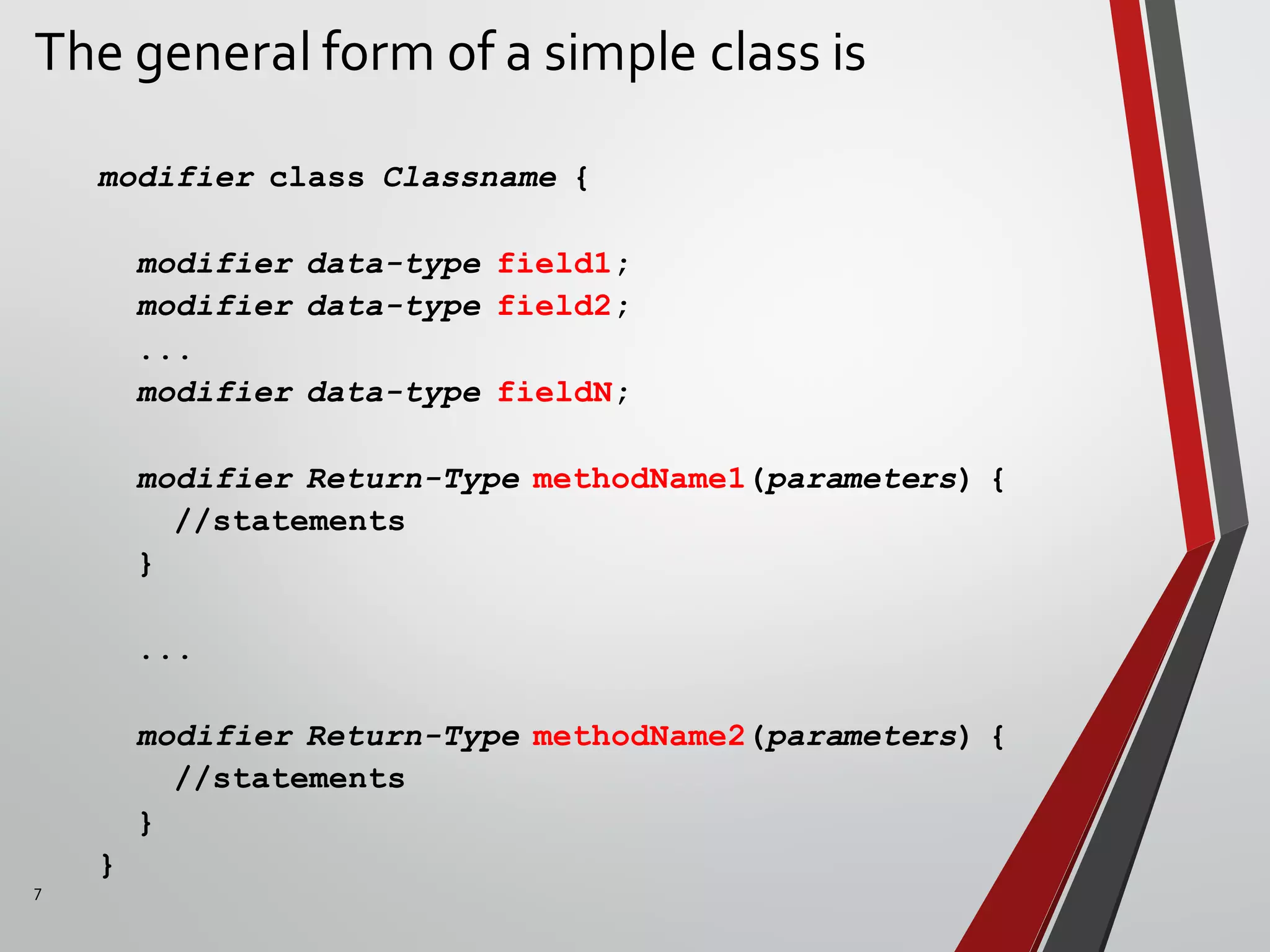
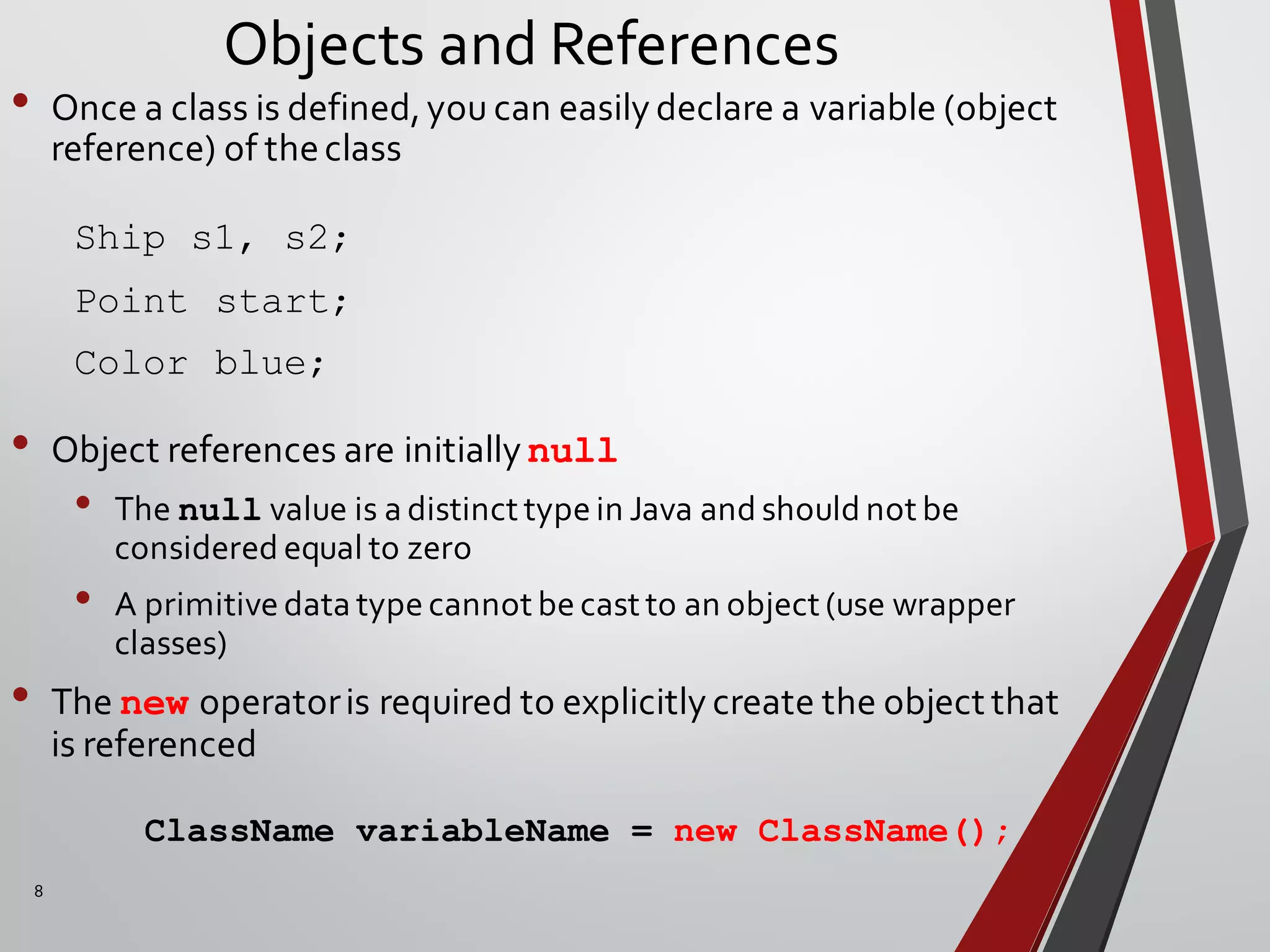
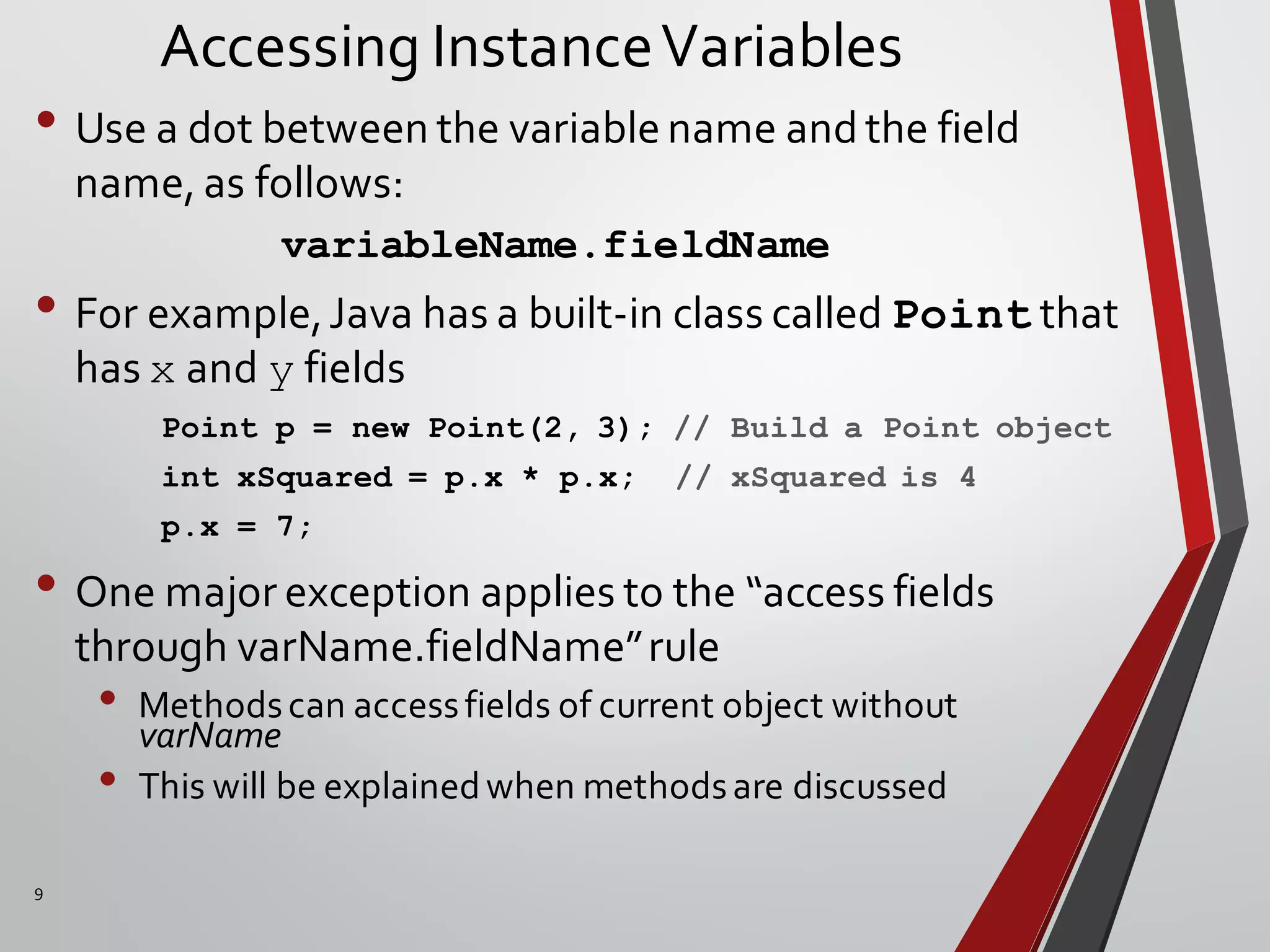
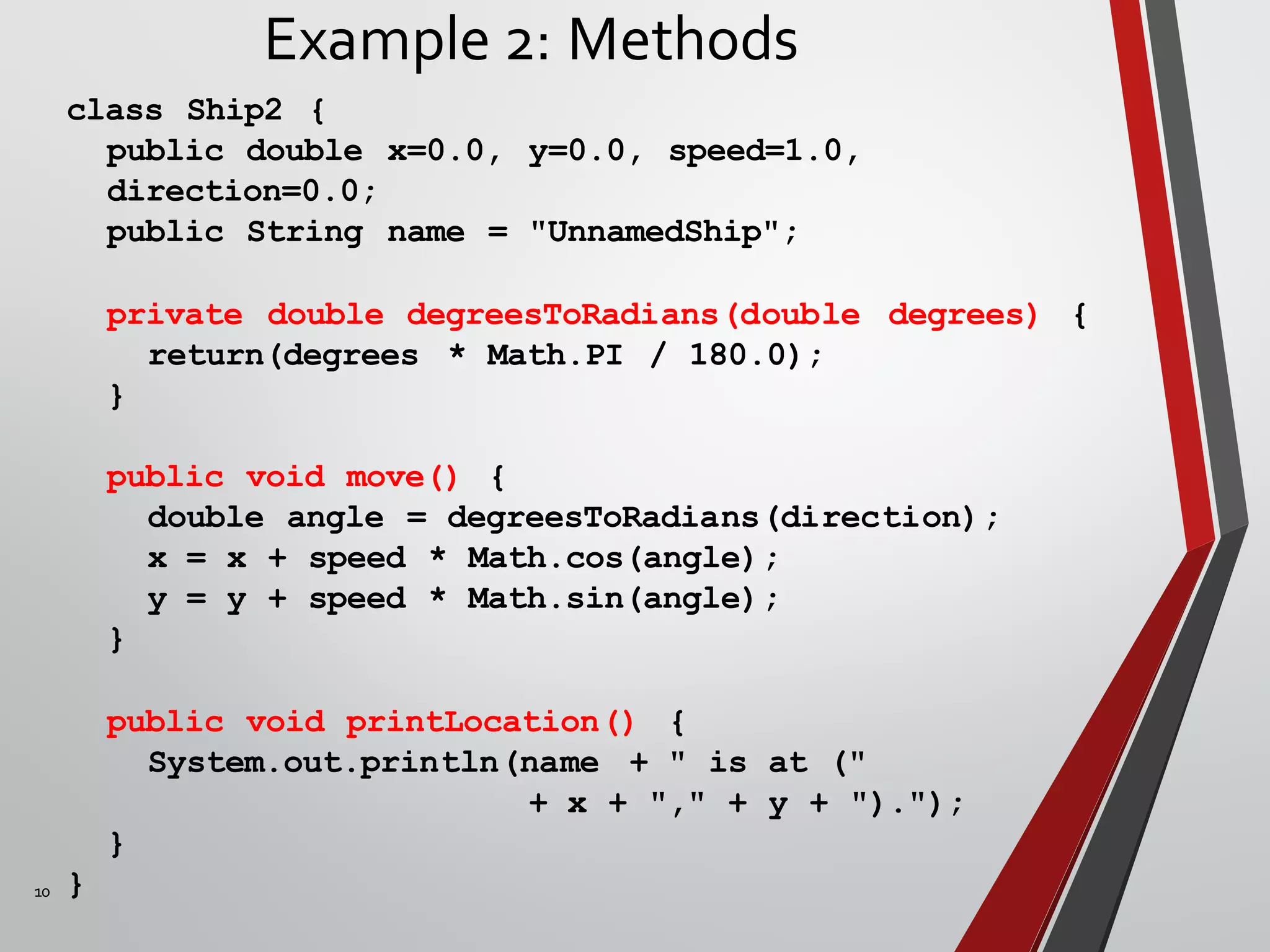
![11
Methods (Continued)
public class Test2 {
public static void main(String[] args) {
Ship2 s1 = new Ship2();
s1.name = "Ship1";
Ship2 s2 = new Ship2();
s2.direction = 135.0; // Northwest
s2.speed = 2.0;
s2.name = "Ship2";
s1.move();
s2.move();
s1.printLocation();
s2.printLocation();
}
}
• Compiling and Running:
javac Test2.java
java Test2
• Output:
Ship1 is at (1,0).
Ship2 is at (-1.41421,1.41421).](https://image.slidesharecdn.com/3-160916032326/75/Java-OOP-Programming-language-Part-3-Class-and-Object-11-2048.jpg)
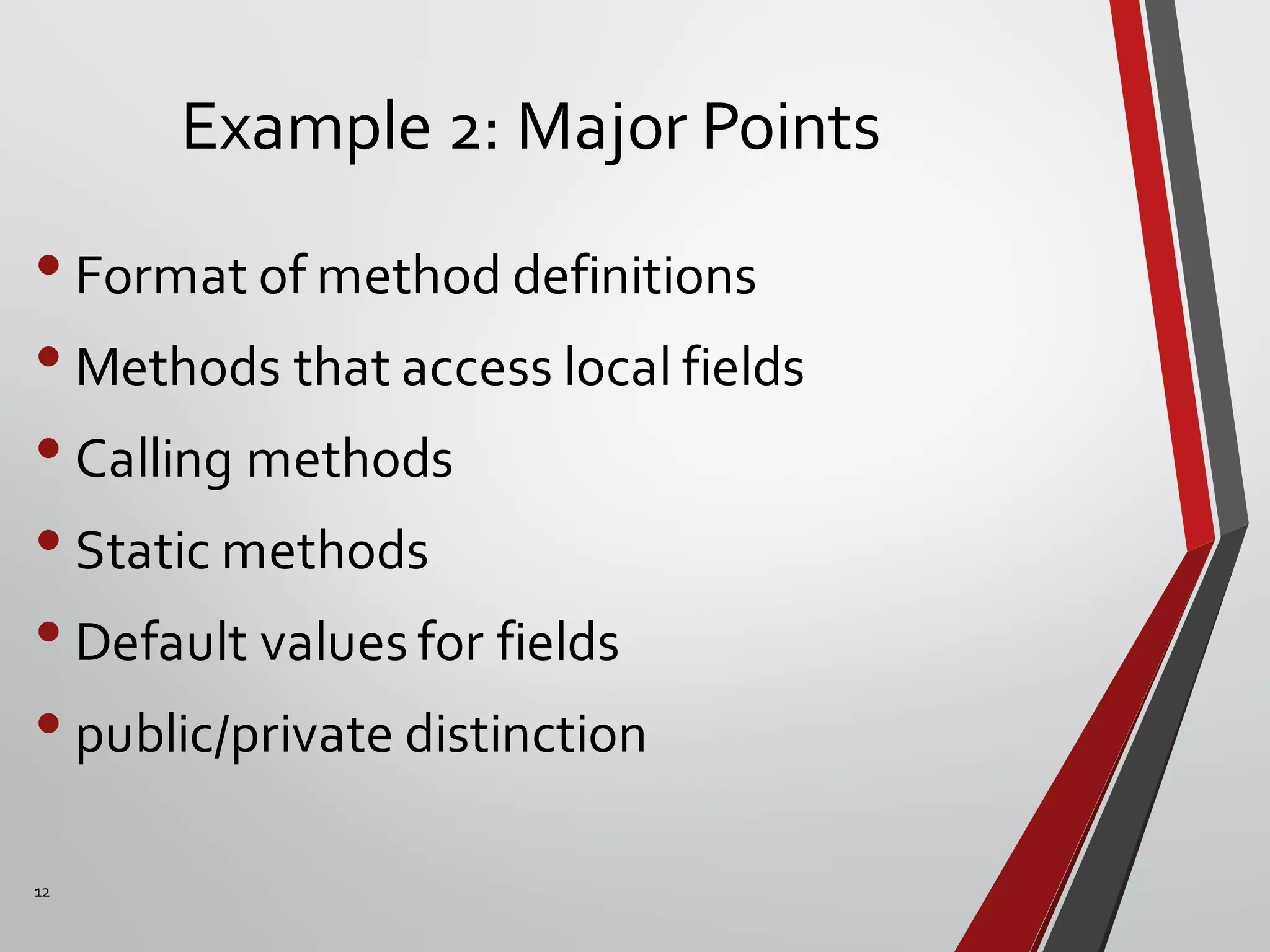
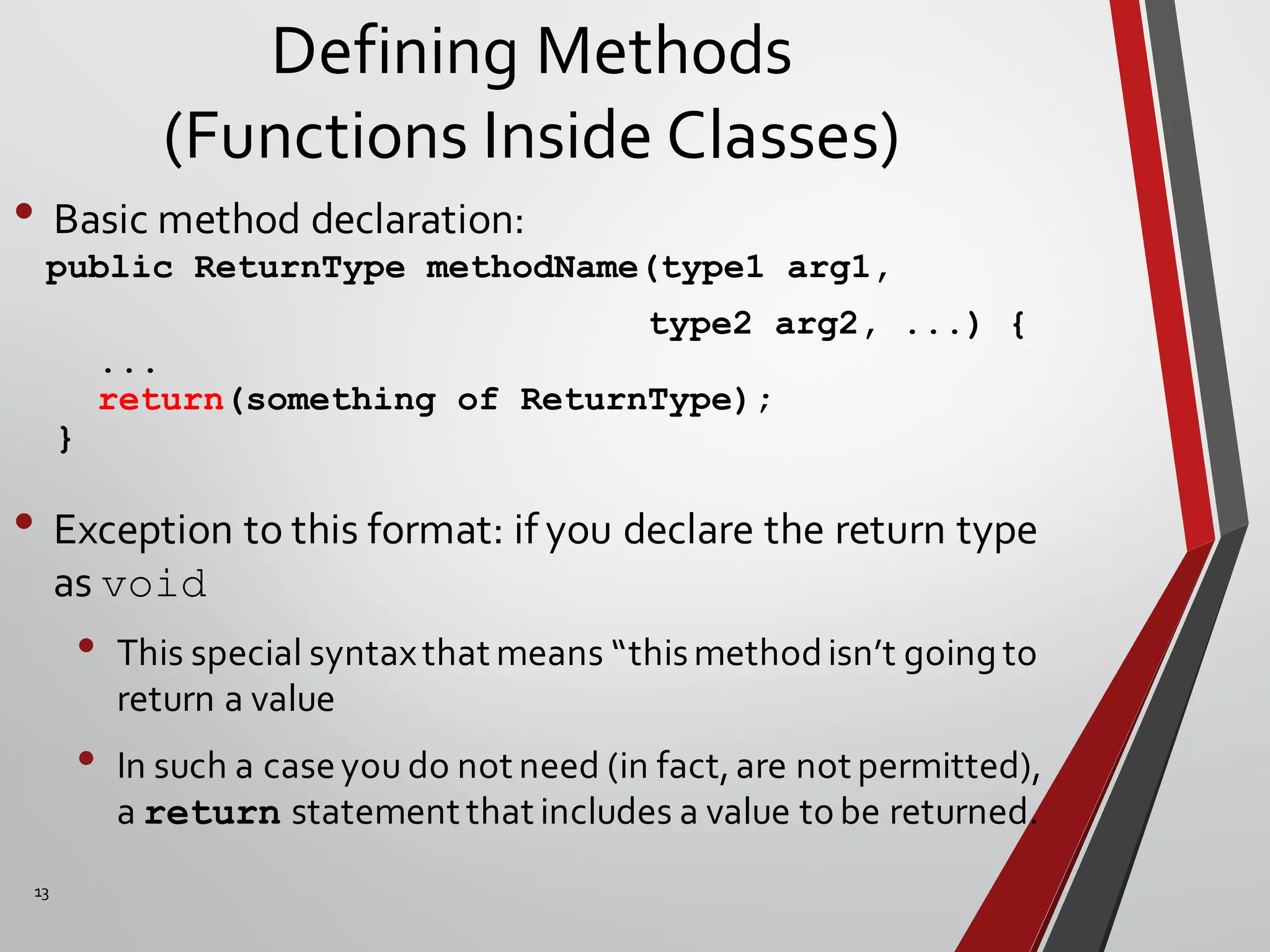
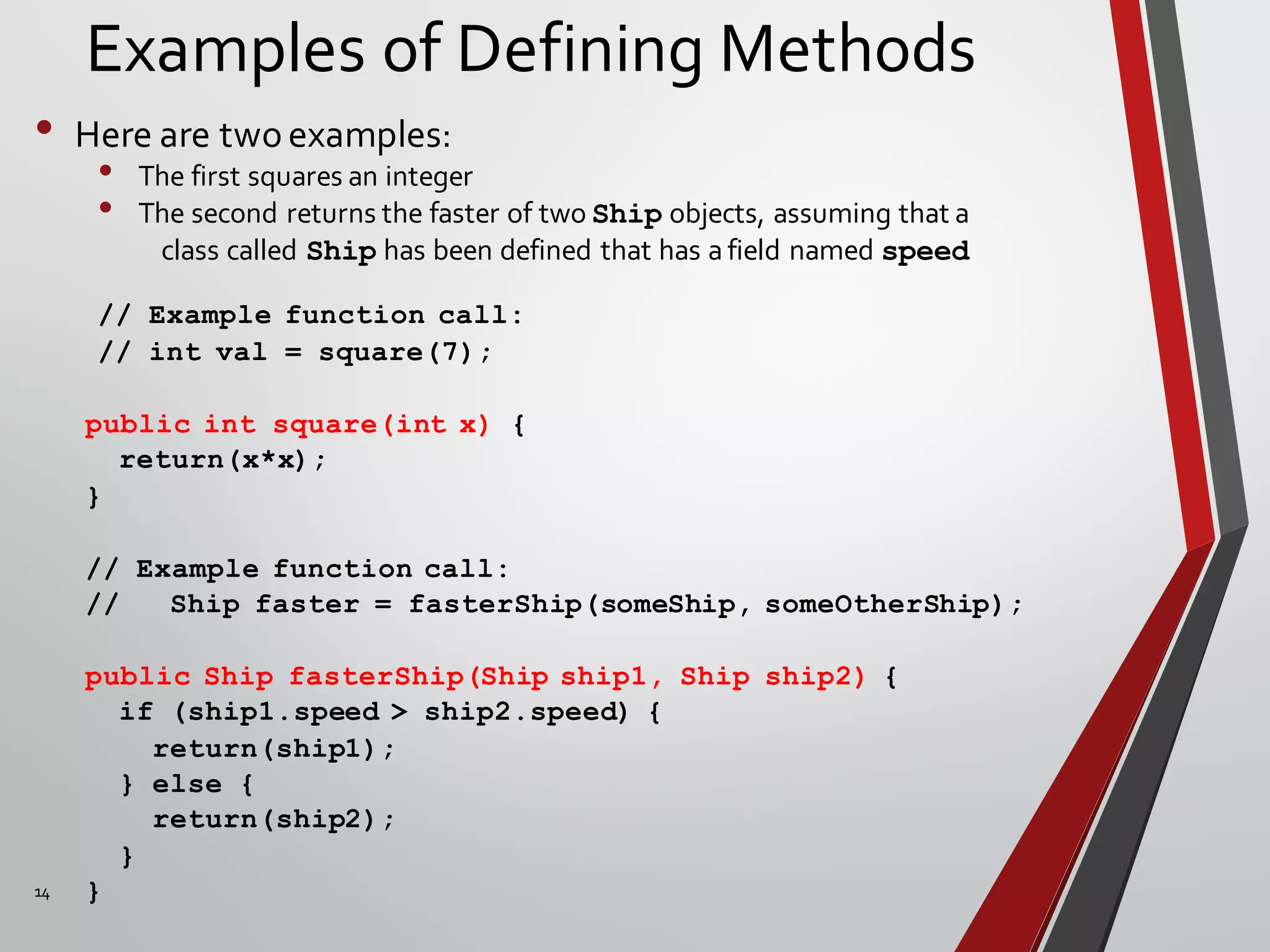
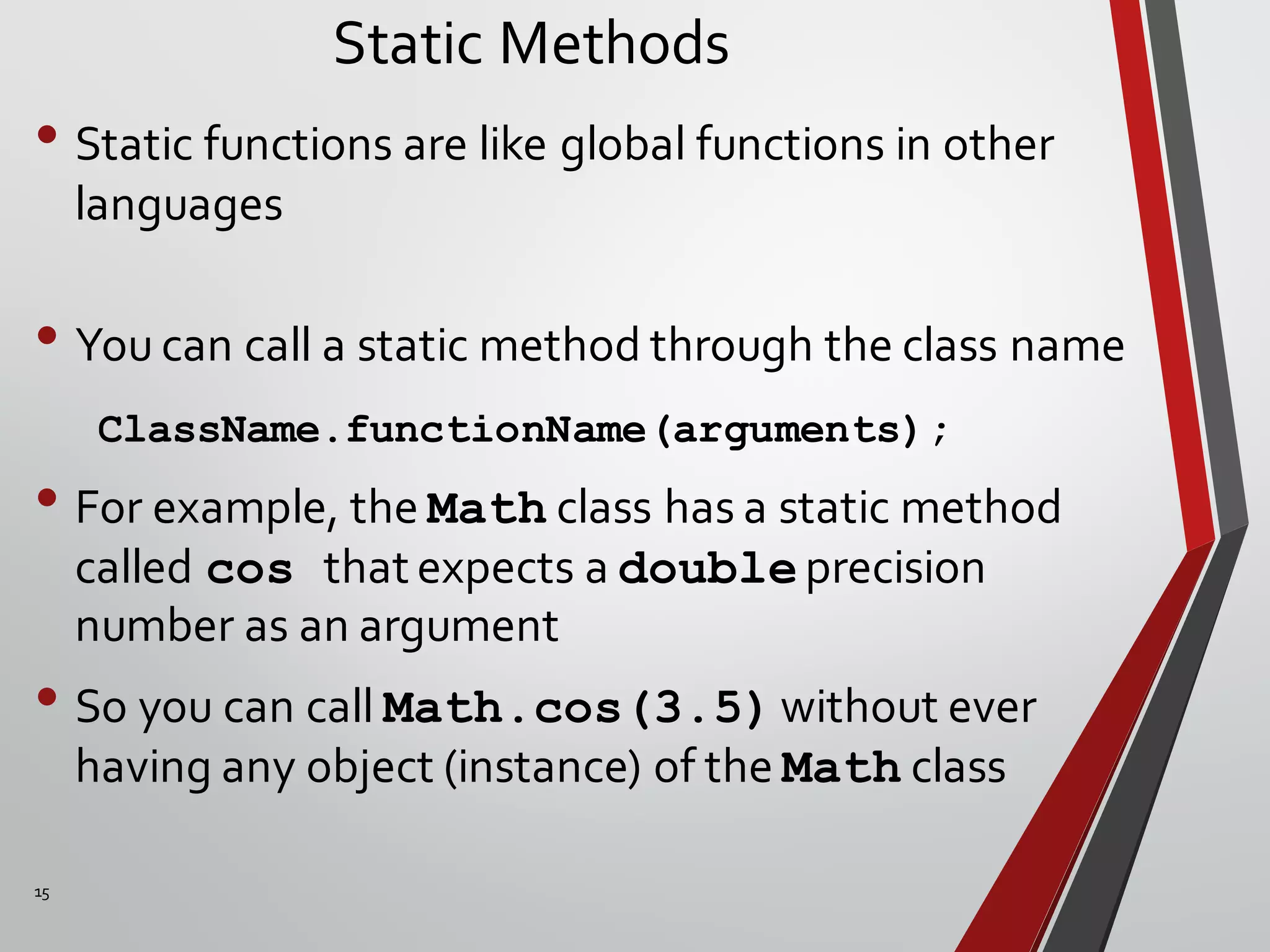
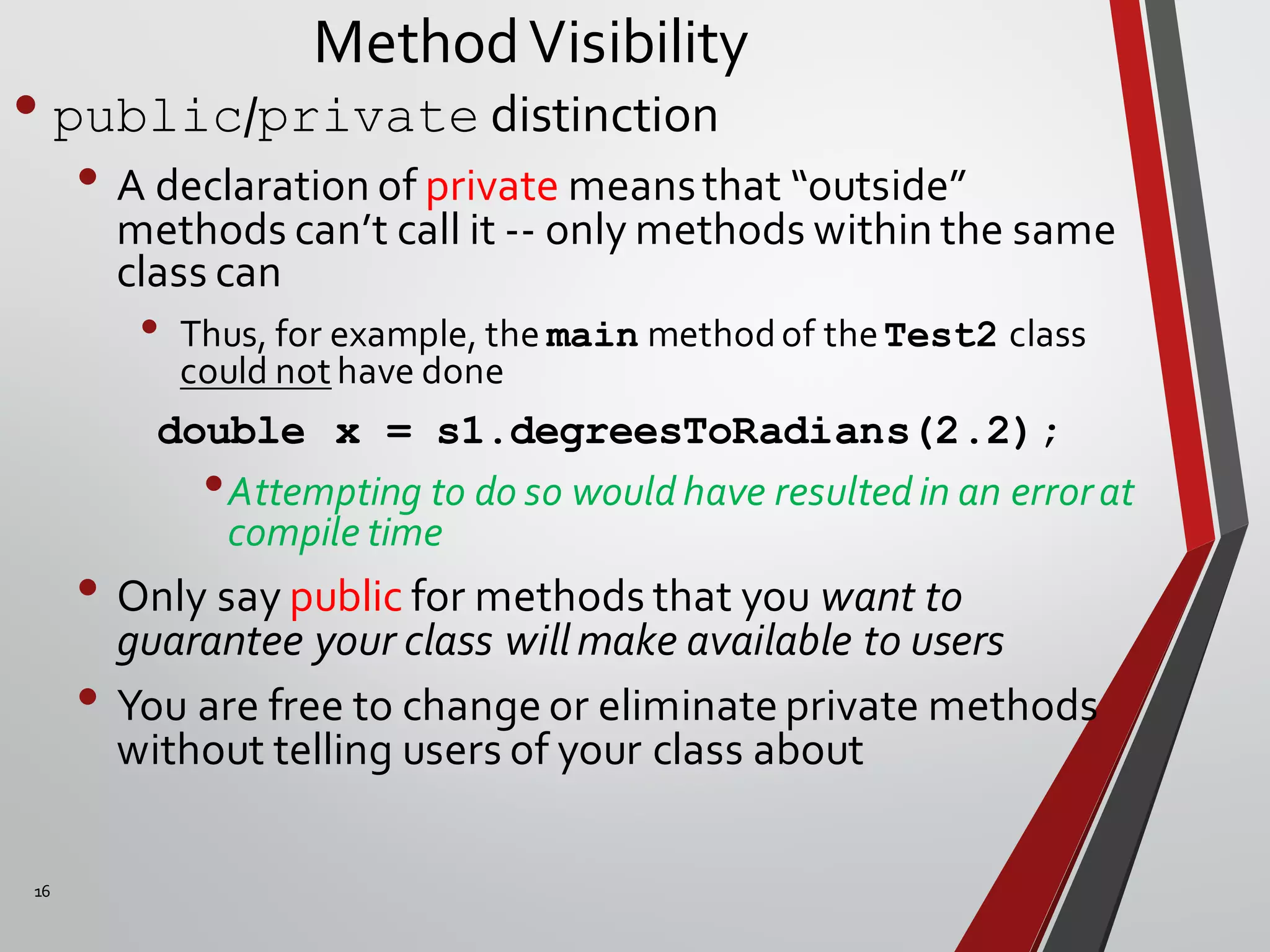
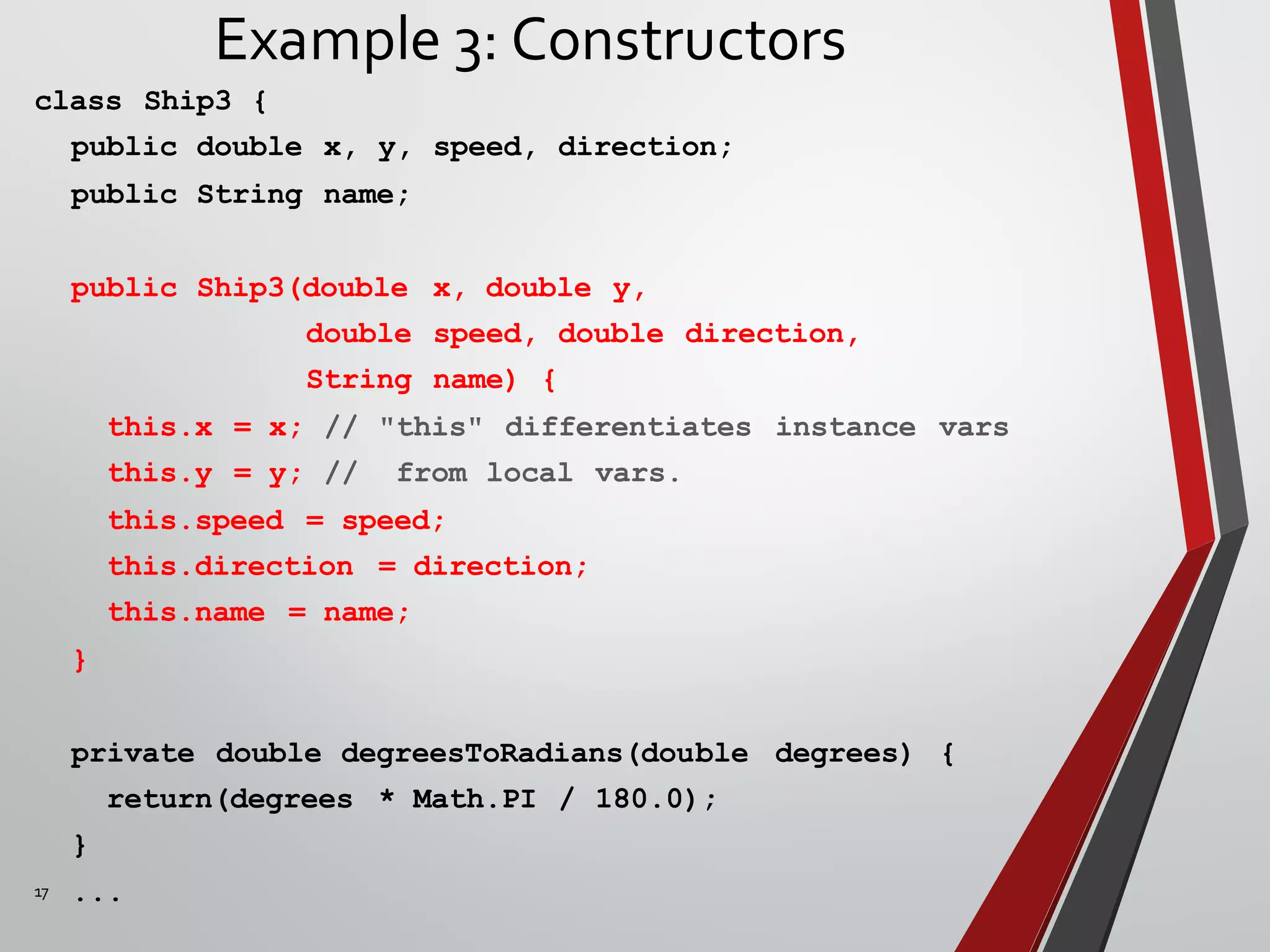
![18
Constructors (Continued)
public void move() {
double angle = degreesToRadians(direction);
x = x + speed * Math.cos(angle);
y = y + speed * Math.sin(angle);
}
public void printLocation() {
System.out.println(name + " is at ("
+ x + "," + y + ").");
}
}
public class Test3 {
public static void main(String[] args) {
Ship3 s1 = new Ship3(0.0, 0.0, 1.0, 0.0, "Ship1");
Ship3 s2 = new Ship3(0.0, 0.0, 2.0, 135.0, "Ship2");
s1.move();
s2.move();
s1.printLocation();
s2.printLocation();
}
}](https://image.slidesharecdn.com/3-160916032326/75/Java-OOP-Programming-language-Part-3-Class-and-Object-18-2048.jpg)
